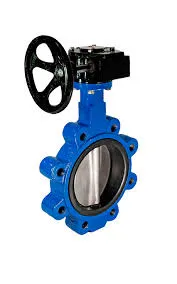Dec . 19, 2024 02:20 Back to list
silent check valve
Silent Check Valves An Essential Component in Fluid Systems
Silent check valves are crucial devices used in various fluid systems to ensure the unidirectional flow of liquids and gases. Unlike traditional check valves, which can produce a considerable amount of noise due to the sudden closure of their discs, silent check valves operate with minimal sound and turbulence. Their design and functioning make them suitable for a wide range of applications, from residential plumbing to large industrial processes.
Understanding the Functionality
A silent check valve typically comprises a disk, a valve seat, and a body. The disk is allowed to pivot on a hinge or is fixed in the valve body, opening to allow flow in one direction and closing when the flow reverses. The unique design of a silent check valve minimizes the slamming action associated with typical check valves, thereby reducing noise and wear. This feature is particularly advantageous in settings where noise reduction is a priority, such as in water supply systems, HVAC applications, and wastewater management.
Advantages of Silent Check Valves
One of the main advantages of silent check valves is their operational efficiency
. The gentle closure mechanism prevents water hammer—an acoustic shock wave caused by the sudden change in fluid momentum—which can lead to burst pipes, equipment damage, and excessive maintenance costs. By preventing this issue, silent check valves enhance the longevity of the entire plumbing system.Additionally, silent check valves are often designed to handle high pressure and flow rates, making them suitable for both small and large-scale applications. Their versatility allows them to be used in various industries, including oil and gas, chemical processing, and municipal water systems.
silent check valve

Another significant benefit is their compact size. Silent check valves typically have a streamlined design that requires less space than traditional check valves. This quality is essential for installation in tight spaces without compromising the system's overall layout.
Installation and Maintenance
The installation of silent check valves is straightforward but requires some considerations to ensure optimal performance. It is essential to install them in the correct orientation, generally in a vertical position, to allow gravity to assist in the closing mechanism. In horizontal installations, careful attention must be paid to the flow direction indicated on the valve body.
Maintenance for silent check valves is relatively minimal, as they are designed for long-lasting performance. However, it is vital to periodically inspect them for wear and tear, especially in systems subjected to extreme conditions. Regular inspections can help catch potential issues before they escalate into significant problems, further emphasizing the importance of these valves in maintaining system integrity.
Conclusion
In summary, silent check valves are an indispensable asset in modern fluid systems. Their design allows for quiet, efficient operation while preventing damaging water hammer and prolonging system life. As industries increasingly focus on sustainability and minimizing noise pollution, the demand for silent check valves is expected to grow. Understanding their functionality and benefits will help engineers, designers, and facility managers make informed decisions when it comes to fluid control systems. Investing in high-quality silent check valves can lead to enhanced performance, reduced operational costs, and ultimately, a more reliable fluid management system.
Share
-
Reliable Wafer Type Butterfly Valves for Every IndustryNewsJul.25,2025
-
Reliable Flow Control Begins with the Right Ball Check ValveNewsJul.25,2025
-
Precision Flow Control Starts with Quality ValvesNewsJul.25,2025
-
Industrial Flow Control ReliabilityNewsJul.25,2025
-
Engineered for Efficiency Gate Valves That Power Industrial PerformanceNewsJul.25,2025
-
Empowering Infrastructure Through Quality ManufacturingNewsJul.25,2025